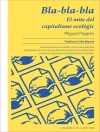Edited by Nora Lustig, the Commitment to Equity Handbook: Estimating the Impact of Fiscal Policy on Inequality and Poverty (Brookings Institution Press and CEQ Institute-Tulane University, 2nd edition, 2022) is a unique manual on the theory and practical methods to estimate the impact of taxation and public spending on inequality and poverty. In addition, the second edition covers frontier topics such as alternative approaches to measure the redistributive effect of education, health, and infrastructure spending. Policymakers, social planners, and economists are provided with a step-by-step guide to applying fiscal incidence analysis, illustrated by country studies.
The 2nd edition of the Handbook has two volumes. Volume 1 is comprised of Part I, Methodology, describes what a CEQ Assessment© is and presents the theoretical underpinnings of fiscal incidence analysis and the indicators used to assess the distributive impact and effectiveness of fiscal policy. Part II, Implementation, presents the methodology on how taxes, subsidies, and social spending should be allocated. It includes a step-by step guide to completing the CEQ Master Workbook©, a multi-sheet Excel file that houses detailed information on the country’s fiscal system and the results used as inputs for policy discussions, academic papers, and policy reports. Part III, “Applications, ” presents applications of the CEQ framework to low- and middle-income countries and includes simulations of policy reforms. In this 2nd edition, chapters 1, 6, and 8 have been significantly updated and two new country studies have been added to Part III. Parts IV (updated), V (new), and VI (new) are available online only. Part IV contains the CEQ Assessment’s main tools. Part V includes the databases housed in the CEQ Data Center on Fiscal Redistribution. Part VI contains the CEQ Institute’s microsimulation tools.
Volume 2 (new) includes a collection of chapters whose purpose is to expand the knowledge and methodological frontiers to sharpen even further the analysis of fiscal policy’s redistributive impact. Topics include: alternative approaches to value in-kind education and health services; alternative methods to evaluate spending on infrastructure; corporate taxes and taxation on capital incomes; inter-temporal fiscal incidence and the redistributive consequences of social insurance pensions; fiscal redistribution, macroeconomic stability and growth; and, the political economy of fiscal redistribution.
Innehållsförteckning
VOLUME 1
List of Illustrations
Foreword
François Bourguignon
Acknowledgments
CEQ Handbook
Nora Lustig
Abstracts
Introduction
1 About Volume 1: Fiscal Incidence Analysis: Methodology, Implementation, and Applications
2 The Relevance of Fiscal Incidence Analysis in Today’s World
3 Fiscal Incidence in Practice: The Commitment to Equity (CEQ) Assessment
4 Main Messages
5 Organization of Volume 1
6 Implementing a CEQ Assessment: How to Use Volume 1
7 CEQ Assessment: Data Requirements
8 About Volume 2: Methodological Frontiers in Fiscal Incidence Analysis
9 About the CEQ Institute
10 About the CEQ Data Center on Fiscal Redistribution
VOLUME 2
List of Illustrations
Abstracts
Alternative Methods to Value Transfers in Kind:
Health, Education, and Infrastructure
Chapter 1: The Effect of Government Health Expenditure on Income
Distribution: A Comparison of Valuation Methods in Ghana
by Jeremy Barofsky and Stephen D. Younger
Introduction
1 What’s Wrong with the Cost of Provision?
2 Using Healthcare Consumers’ Choices to Estimate the Compensating Variation for Public Healthcare Expenditures
3 The Health Outcomes Approach
4 Summary: Choosing among the Options
5 Insurance Value of Financial Risk Reduction
6 Conclusion
Appendix 1A
1 Using the Spectrum Policy Models Software
2 Financial Risk Protection with Consumption Floor Proportional to Income
3 Concentration Curves by Valuation Method
4 Using Willingness and Ability to Pay by Matching Publicly Funded Health Services to Private Health Services
5 Data and Do-Files for Replication
Chapter 2: The Market Value of Public Education: A Comparison of
Three Valuation Methods
by Sergei Soares
Introduction
1 First Method: Schooling Is Worth What It Costs the State to Provide It
2 Second Method: Schooling Is Worth What the Labor Market Says It Is Worth
3 Third Method: Schooling Is Worth What the Private Education Market Says It Is Worth
4 Comparison of Results
5 Conclusion
Chapter 3: Redistribution through Education: Assessing the Long-Term
Impact of Public Spending
by Sergio Urzua
Introduction
1 The Conceptual Framework
2 The Value of Public Education Spending to Its Beneficiaries
3 Chile and Ghana: Differences and Similarities 77
4 Empirical Analysis
5 Conclusions 105
Appendix 3A Dynamic Fiscal Incidence of Public Spending
in Education 111
1 The Recursive Problem
2 Intertemporal Fiscal Incidence Analysis
Appendix 3B Instrumental Variable
Chapter 4: The Market Value of Owner-Occupied Housing and Public Infrastructure Services
by Sergei Soares
Introduction
1 Literature
2 Methodology
3 Imputing Rents and Public Infrastructure Services for 2015
4 Comparisons with 2005 and 1995
5 Conclusions
Fiscal Incidence of Corporate Taxes
Chapter 5: Taxes, Transfers, and Income Distribution in Chile: Incorporating Undistributed Profits
by Bernardo Candia and Eduardo Engel
Introduction
1 Tax Regime and Social Spending in Chile
2 Data, Methodology, and Assumptions
3 Results
4 Marginal Contribution and Shapley Value
5 Distributive Effects of the 2014 Tax Reform
6 Conclusions
Redistributive Impact of Contributory Pensions
Chapter 6: The Within-System Redistribution of Contributory Pension Systems: A Conceptual Framework and Empirical Method of Estimation
by Carlos Grushka
Introduction
1 Are Pension Systems Tax-Transfers or Deferred Wages Schemes?
2 Redistribution, Neutrality, and Actuarial Fairness
3 Social Security Pensions in Argentina
4 How Redistribution Works for Social Security Pensions in Argentina
5 An Alternative Methodological Framework
6 Conclusion
Fiscal Redistribution and Sustainability
Chapter 7: Intertemporal Sustainability of Fiscal Redistribution: A Methodological Framework
by Jose Maria Fanelli
Introduction
1 Income Concepts, Fiscal Redistributions, and Sustainability
2 Fiscal Redistributions, Demography, and Wealth Constraints
3 Fiscal Redistributions and Income Strata
4 Concluding Remarks
Appendix 7A Pensions as Deferred Income
1 Income Strata and Deferred Income
2 Private Wealth and Forced Savings
3 Demography and Wealth
Appendix 7B Nomenclature
Chapter 8: Fiscal Redistribution, Sustainability, and Demography in Latin America
by Ramiro Albrieu and Jose Maria Fanelli
Introduction
1 Fiscal Policy and Redistribution Outcomes
2 Fiscal Redistributions and Debt Sustainability
3 The Future Sustainability of Fiscal Policy in Aging Societies
4 Conclusion
Political Economy of Redistribution
Chapter 9: On the Political Economy of Redistribution and Provision of Public Goods
by Stefano Barbieri and Koray Caglayan
Introduction
1 The Meltzer and Richard (1981) Pure Redistribution Model
2 Assumptions of Linear Tax Rates and the Importance of Public Provision
3 The Provision of Public Goods Using a Median Voter Framework
4 Extension to Nonlinear Tax Schemes
5 The Provision of Public Goods Financed with a Flat Tax with Exemptions
6 Taxation and Redistribution Models without Functional Form Assumptions
7 Conclusion
Appendix 9A Technical Derivations of the Meltzer and Richard (1981) Model
1 Response of Consumption to Government Transfers
2 Response of Pretax Income to Productivity
Appendix 9B Technical Derivations of Lambert (2001)
About the Authors
Index
Om författaren
Nora Lustig is Samuel Z. Stone Professor of Latin American Economics and founding Director of the Commitment to Equity Instituteat Tulane University where she researches the impact of taxation and social spending on inequality and poverty, and the determinants of inequality. Her more recent work has focused on the short- and long-term impacts of COVID-19 on educational mobility, inequality, and poverty.












